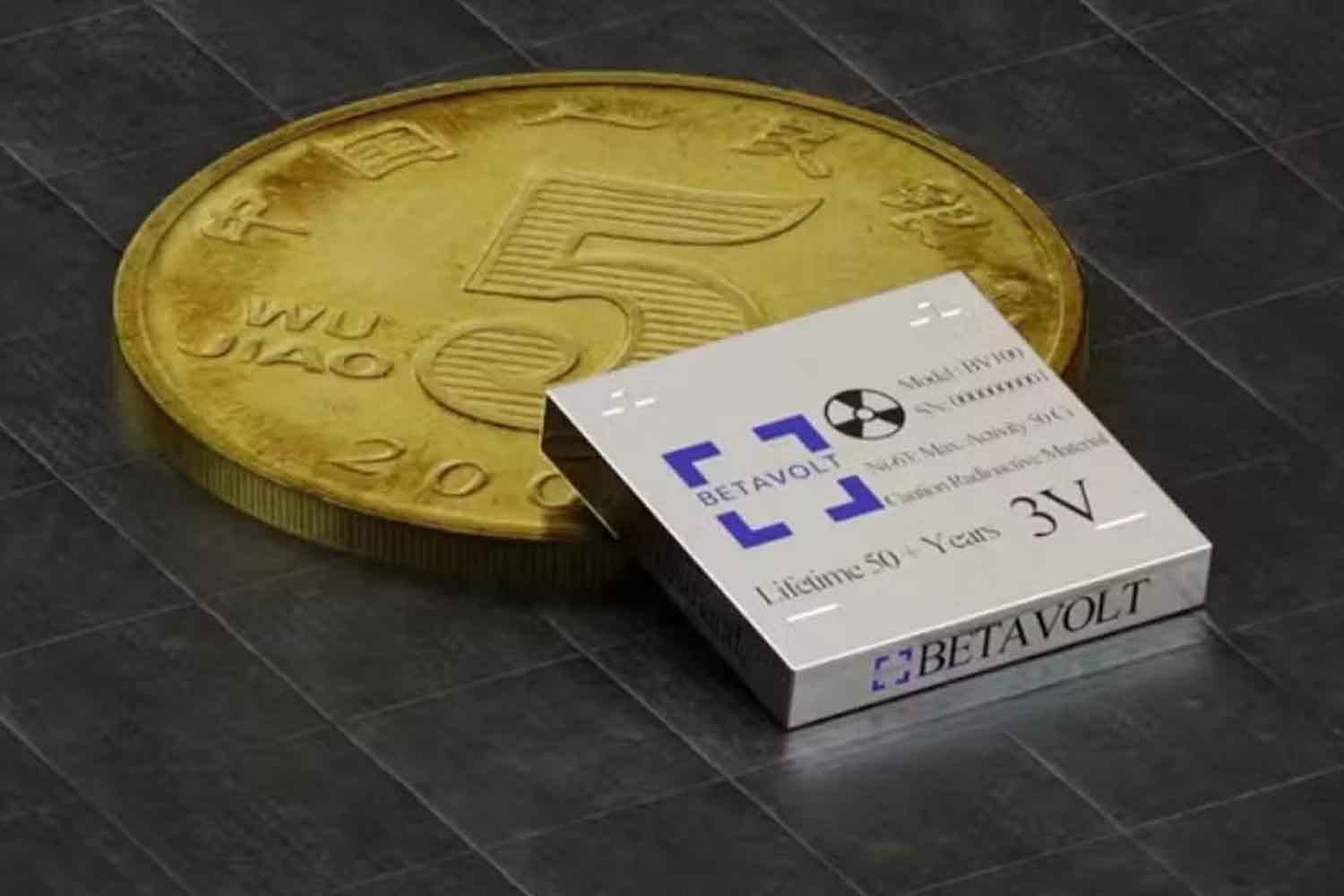Betavolt presents the BV100, the first commercial nuclear microbattery that works for half a century without recharging, with an energy density 10 times higher than lithium

©Betavolt
Do you remember the so-called “infinite battery” invented by Chinese company Betavolt? About the size of a coin, it was designed for low-power applications and can power devices for half a century without recharging. Now, the company has officially announced the start of mass production for the BV100, a nuclear microbattery based on nickel-63.
We have entered mass production of the BV100
Chinese startup Beijing Betavolt New Energy Technology has officially launched large-scale production of the BV100, a nuclear microbattery marking a historic moment for the energy sector. This is the first commercial device to use betavoltaic technology, a system that harnesses the controlled radioactive decay of isotopes to generate electricity.
Unlike radioisotope thermoelectric generators (RTGs), the BV100 does not produce heat, but instead directly converts the kinetic energy of electrons into continuous electrical current. At the core of the battery is nickel-63, an unstable isotope that emits beta particles during decay. These particles pass through two thin layers of synthetic diamond, used as semiconductors, generating a stable, continuous flow of electricity.
Measuring just 0.59 x 0.59 x 0.2 inches, the BV100 is intended for microdevices such as pacemakers, sensors, or smartwatches, but it can also be combined into modules to increase power output. Its energy density is 3,300 milliwatt-hours per gram—over ten times higher than that of lithium-ion NMC (nickel-manganese-cobalt) batteries, which average around 300 mWh/g.
The BV100 focuses not only on performance but also on safety, durability, and reduced environmental impact. Thanks to the absence of flammable components, it eliminates the risk of fire or explosion. The device operates across a wide temperature range—from -76°F to +248°F—without issues of self-discharge.
Once decay is complete, the nickel-63 transforms into stable copper, making the material non-radioactive and easy to dispose of. The battery requires no maintenance, no recharging, and shows no degradation over time, unlike common lithium-ion batteries.
Mass production kicked off just over a year after the first prototype was unveiled in January 2024. At the time, the battery was still at the prototype stage but had already generated significant interest. However, scientists had pointed out its limitations: with a power output of about 100 microwatts at 3 volts, the BV100 was suited only for ultra-low-power devices.
Betavolt has also announced a 1-watt version slated for release by the end of 2025, which could open new possibilities in IoT, microrobotics, and autonomous sensors. Although still unsuitable for large electronic devices, pairing the battery with capacitor buffers would help overcome power consumption spikes.
Global competition and parallel research
The success of the BV100 has sparked global interest. In South Korea, the Daegu Gyeongbuk Institute of Science & Technology (DGIST) has developed a similar battery, based on carbon-14. The prototype, led by Professor Su-Il In, uses a dye-sensitized structure with titanium dioxide semiconductors and a ruthenium dye.
Although the conversion efficiency of 2.86% is promising, the power density remains very low: just 20.75 nanowatts per square centimeter per millicurie, insufficient even to power a calculator. However, it remains promising for biomedical devices or remote sensors, where longevity is a higher priority than power.
Meanwhile, Betavolt has gained national recognition, including a third-place award at the 2023 Innovation Contest promoted by the China National Nuclear Corporation, and is currently registering patents worldwide.
A new era for autonomous and sustainable energy
The introduction of the BV100 represents an epoch-making advancement in the field of autonomous and sustainable energy. With its ability to provide power for 50 years without maintenance, tiny size, and lack of safety risks, this nuclear battery is set to revolutionize industries such as medical devices, aerospace, remote sensing, and artificial intelligence.
Source: Betavolt
